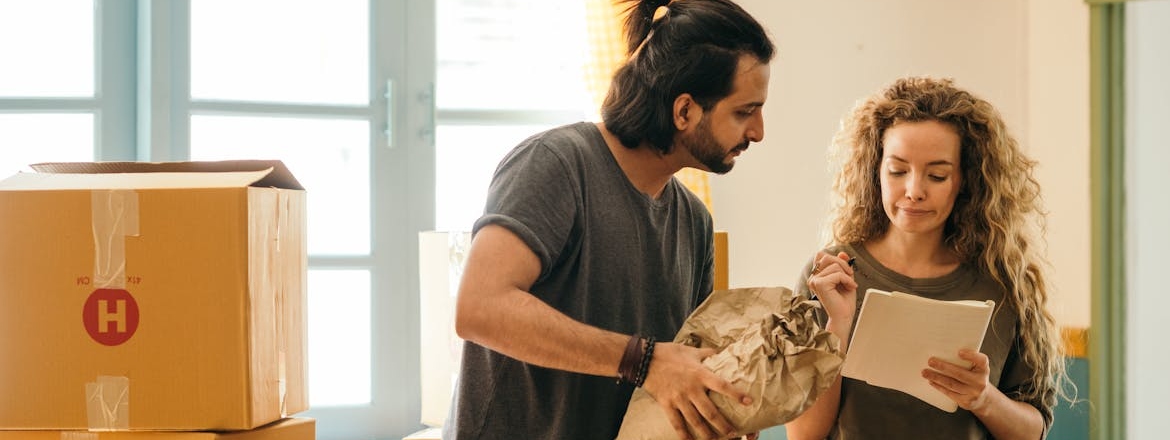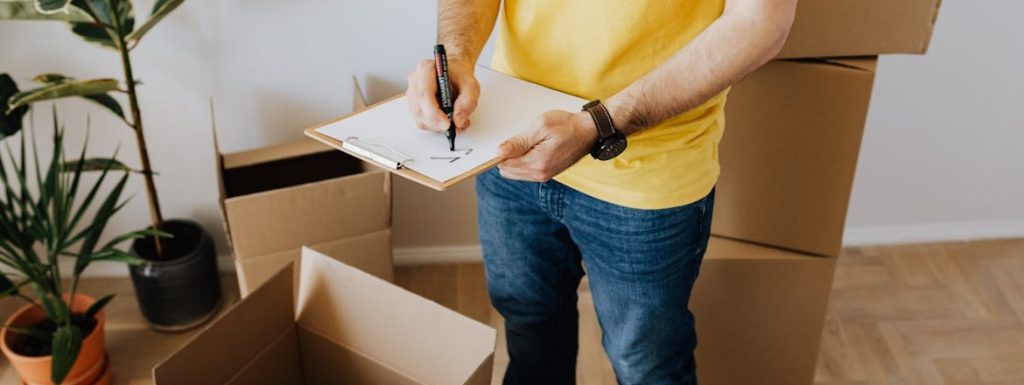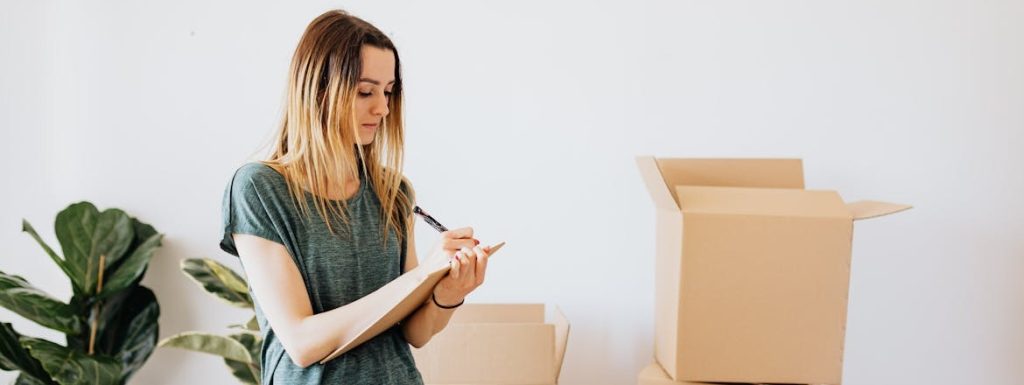Short guide to creating your packing checklist
get a quote
Packing for a move, trip, or major transition can quickly turn into a chaotic guessing game if you don’t have a plan or temporary storage solutions. And without a proper checklist, you risk forgetting essentials or packing things that just add extra weight. Creating your packing checklist that’s also smart and streamlined is a method for saving time, reducing stress, and staying organized from start to finish. Our short guide will walk you through the essentials of building your own packing checklist, whether you’re preparing for a home move, a vacation, or simply organizing your belongings for storage.
Start by defining your purpose
Every packing list starts with a clear goal. Are you packing for a cross-country move, a weekend getaway, or a temporary relocation? The nature of your journey shapes everything—what you need, how much you bring, and how you organize it all.
Take a moment to picture your destination or outcome. Are you moving into a smaller space or storing items between homes? Are you preparing for an extended stay or just organizing what you don’t use every day? Understanding your end goal makes it much easier to focus only on what’s necessary.

Make your checklist functional, not fancy
A good checklist doesn’t need to be color-coded or perfectly designed—it just needs to work. Whether you use a notes app on your phone, a spreadsheet, or a notebook, pick a format that you’ll stick with. The key is consistency.
And don’t wait until the night before you grab your packing supplies in Seattle and start packing. Begin building your list at least a week ahead of time, giving yourself room to remember the little things—chargers, extra socks, a favorite mug—that often get overlooked in a rush.
Break your packing into clear categories
Instead of listing random items as they come to mind, break things into categories. This makes your checklist easier to follow and helps ensure nothing slips through the cracks. Think of the different zones in your life: clothing, electronics, kitchenware, paperwork, toiletries, and so on.
Within each category, think about usage and frequency. Items you use daily should be marked for priority access, while things you won’t need right away can be packed deeper or even stored off-site. Using a system like this not only keeps you organized but also reduces decision fatigue as you go.
Your essential packing checklist framework
Now that you know how to approach the planning, here’s a simple yet effective framework to base creating your packing checklist on. Adjust the categories as needed, depending on your situation:
- Daily essentials: Medications, phone, wallet, keys, ID, glasses, chargers, and snacks.
- Clothing: Pack according to climate and occasion—casual wear, outerwear, shoes, sleepwear, and accessories.
- Toiletries: Toothbrush, toothpaste, skincare, hairbrush, deodorant, and any specialty products.
- Electronics: Laptops, tablets, headphones, batteries, chargers, and adaptors.
- Documents: Passports, insurance, contracts, leases, and any important paperwork.
- Kitchen basics: If applicable, pack only what you use regularly—one good knife, reusable containers, a coffee setup, or a small pan.
- Storage or move items: Label boxes by room or type—books, decor, tools, seasonal gear, etc.
If you’re downsizing or relocating temporarily, portable Newcastle self storage units can be a lifesaver here. You can pack your boxes at your own pace, store them securely off-site, and access them only when you need to. It keeps your checklist lean and your space clean.

Customize your list to fit your lifestyle
No two packing checklists should look the same. A student heading to college, a family preparing for a big move, and a digital nomad going abroad all have different needs. That’s why flexibility matters.
Think about your routine. What do you reach for every morning? What’s non-negotiable for work, comfort, or hobbies? Packing isn’t just about logistics—it’s about making your life function wherever you land. The more your checklist reflects your habits, the smoother your transition will be.
Also, if you’re decluttering while packing, don’t let go of things just because they don’t fit right now. A portable storage option allows you to hold onto belongings you’re not ready to part with, while still creating the space you need for your next step.
Stay calm and pack in stages
Trying to pack everything in one sitting is a recipe for burnout. Instead, divide your checklist into three phases: prep, pack, and review. In the prep stage, gather supplies—boxes, tape, labels, and bins. During the packing phase, focus on one category or room at a time.
In the review phase, walk through your list to confirm everything is accounted for and packed correctly. You won’t feel rushed, and you’ll avoid those last-minute panics over forgotten items or poorly packed boxes.

Think ahead so unpacking is easier
A good packing checklist not only helps you get out the door—it makes arriving easier too. Label everything clearly, keep like items together, and set aside a “first day” box with your essentials. When you arrive, you’ll have what you need right away without rummaging through everything.
Organizing your checklist with the unpacking process in mind also helps you prioritize what to load last and unpack first. If you’ve opted for portable Redmond self storage during your move, this becomes even more useful, since you can decide which containers need to be delivered sooner and which ones can wait.
Pack like a pro, feel like a pro
Packing doesn’t have to feel like an endless game of Tetris or a guessing game of what you might need. With a solid checklist, clear priorities, and smart tools like portable storage at your side, the process becomes manageable—and even enjoyable. You’ll feel more confident, more prepared, and far less overwhelmed. And that’s the power of planning and creating your packing checklist well.
